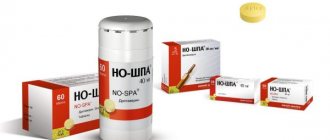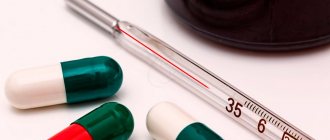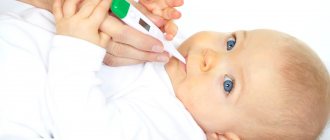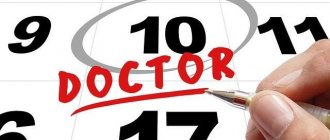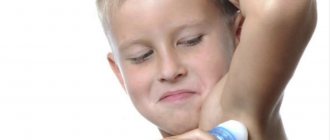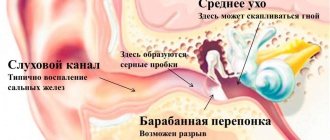This situation, in which a child’s temperature rises, is the most common. Every day, mothers are faced with a situation where the baby’s forehead becomes hot, which is due to the need to take appropriate measures. Initially, you should definitely take a thermometer (preferably mercury) and take measurements. If its value is above 38 degrees, then you cannot hesitate; you need to resort to the use of antipyretics. For children over 3-5 years old, it is necessary to give antipyretic drugs directly when the thermometer readings rise above 38.5 degrees.
It often happens that after waking up the child’s temperature rises and develops a fever. What do the symptoms of fever after sleep indicate? First of all, these symptoms of fever mean that an infection has entered the baby’s body, against which the immune system begins to actively fight. We will learn more about the rise in temperature after sleep in children below.
Reasons for rising temperature
Body temperature above 37⁰ is called subfebrile if it is stable for a certain period of time. For a small baby, this phenomenon is common, because his heat exchange system does not yet work correctly. It is enough to ventilate the room or simply change clothes to stabilize it. However, the trick works in simple cases, so if changing clothes does not help, pay attention:
- How long does low-grade fever last? If it persists for a long time regardless of the daily routine, this may be due to the formation of hidden tumors in the body. It is worth showing the baby to specialists.
- An increase to 38⁰ is a natural phenomenon during teething. When teeth are cut, gums become inflamed. Children are restless, capricious, and may have trouble sleeping.
- Also, babies can simply cry hysterically with a temperature above 38⁰, even in children after a year the indicators may increase slightly. For overly emotional kids, a sharp jump upward is a consequence of a stressful situation. As soon as the child calms down, the fever goes away.
- An increase in temperature is typical for colds of an infectious nature. Such conditions are almost always accompanied by coughing attacks, rhinitis, and conjunctivitis.
Measuring temperature after sleep
When a person sleeps, the body also rests, so the slowdown of all processes is natural. The result is that your body temperature rises slightly during sleep. It is not taken into account if the child looks healthy. On the contrary, if the baby has a hot forehead and there are signs of an adenovirus infection, then urgent measures need to be taken . Before measuring your temperature after sleep, it is advised to wait the required half hour.
Increased body temperature in an infant
The body temperature of a newborn baby during the first 5 - 7 days of life fluctuates around 37.0, and in some children the body temperature may increase during this period to 38.0 - 39.0. This phenomenon is called transient hyperthermia of newborns. In addition to hyperthermia, hypothermia is even more common in newborns, that is, a decrease in body temperature below normal. Due to the immaturity of brain structures, not only newborn children, but also children of the younger age group up to 3 - 5 years old have a tendency to quickly overheat and quickly become hypothermic. This “volatility” of body temperature is especially typical, of course, for children in the first year of life. Therefore, if, after measuring your baby’s body temperature, you find an increase in body temperature to 37.0 - 37.4 degrees, do not rush to immediately call a pediatrician. It may be enough to measure the body temperature, having previously unswaddled the child, or simply remove the warm blanket from him so that after 15 - 20 minutes the temperature returns to normal.
Another common cause of increased body temperature in the first 1.5 - 2 years of a child’s life is a reaction to teething. We wrote about this problem in a separate article on our website. Let me briefly remind you that the reaction to teething in children is very individual. An increase in body temperature, most often, falls within the range from 37.1 to 37.6 degrees. Increased temperature during teething usually lasts no more than 2–3 days, and in most children does not require the use of antipyretic drugs. However, in some cases, when teething, the child may have a fairly high fever of up to 38.0 and even up to 39.0 degrees. In this case, you cannot do without the use of special anti-inflammatory gels for application to the gums and antipyretics in the form of suppositories (suppositories), for example Nurofen.
Rules for measuring temperature
Infants are unlikely to complain to their mother, so parents often use a thermometer as a means of first diagnosis. If you want to know the exact result, measure according to the rules. Easy to remember, no need to measure immediately after sleep, as well as bathing, eating, active games, strong emotions. To do everything correctly, it is better to wait half an hour for the body to return to normal, and then begin the measurement procedure.
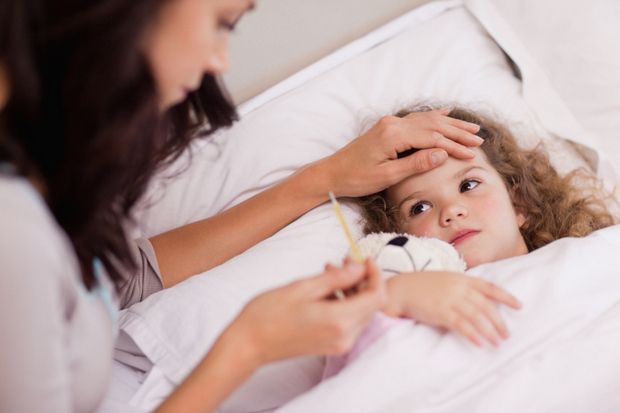
Should I wake my child if there is a high temperature?
High temperatures have a negative effect on activity, this is immediately noticeable. Children become lethargic and whiny. It’s quite natural that any parent, seeing something like this, will immediately pick up a thermometer. If suspicions are confirmed, you need to give an antipyretic, and then in any case call a doctor at home. However, it happens that while waiting for the pediatrician, a baby with a fever simply falls asleep. What should parents do, since perhaps it will rise by another two or three degrees? How dangerous is it to sleep at high temperatures? What should parents do to avoid complications?
Why do children have fever?
If the child looks unhealthy, and his behavior only confirms the parent's suspicions, it is quite possible that he may fall asleep with a fever. This does not mean at all that the baby has begun to recover. Of course, you shouldn’t resist his wishes, but it’s imperative to control his sleep. In a sleepy state, the temperature can rise to a critical level, and parents should be prepared for this.
What causes the temperature to rise during sleep? Its stability depends on metabolic processes in the body. The faster they pass, the better thermoregulation functions. Due to the fact that in children under three months the system is not functioning properly, the temperature may rise during sleep. It can be measured in three ways: in the armpit area, orally, rectally. There are different standards for each option:
- 36-37.3⁰ for the armpit;
- 36.6-37.2⁰ for oral;
- 36.9-38⁰ for rectal.
The main symptoms of fever in a young patient
The signs of a high temperature are known to everyone, so parents can easily notice a fever in their child in time. Very often, exhausted by illness, sick children fall asleep. This is considered a natural reaction; most likely, defense mechanisms have worked here, so it is not necessary to lift the baby. However, you shouldn’t be idle either; you can measure your temperature while you sleep, when the need arises. Temperatures above 38⁰ can be fought even when the baby has fallen asleep.
What to do if a sleeping child has a high temperature
The opinion of pediatricians is that it is pointless to resist the natural desires of a sick child. Very correct advice, because if you don’t let him sleep, he will start crying, and this can have an even worse effect on his health. While the child is sleeping, monitor his condition. The following indicators are important: rhythm of breathing, skin, general behavior. The details can tell a lot about how critical the condition is.
When the mercury column freezes at 38⁰, emergency measures are unnecessary. Parents can ease the baby's condition by wiping them with warm water. If the indicators increase, it still makes no sense to wake the patient, but it is better to place an antipyretic suppository rectally. When everything is done carefully, the child will not wake up. Also, do not cover a baby with a high temperature with a warm blanket. Indicators above 39⁰ are especially dangerous, since a febrile state negatively affects vital organs. The longer hyperthermia persists in a child, the greater the risk of developing pathologies of the cardiovascular, nervous systems and respiratory organs.

Young children are at risk of having febrile seizures when they have a high fever. The duration of attacks varies individually, from ten seconds to several minutes. In terms of symptoms, seizures are similar to an epileptic attack, but this is only a superficial similarity. According to Komarovsky, children under three, due to an imperfect nervous system, can experience febrile convulsions without serious damage to health. You need to urgently call an ambulance:
- The attack lasts more than 10 minutes.
- When convulsions are accompanied by severe vomiting.
- During seizures, breathing is held.
- Simultaneously with the convulsions, the skin tone changes.
- After a seizure, the baby reacts sluggishly to others.
Causes of fever in a child after sleep
An increase in temperature without other signs of colds can quickly appear and disappear just as quickly. During sleep, the body rests, and therefore the temperature drops to normal levels. Only if the child has signs of illness will the temperature during sleep not drop significantly.
It is important to know! Doctors recommend taking temperature measurements in children directly during sleep or at rest. This is justified by the fact that it is during this period of time that the child’s temperature readings are the most plausible.
After the child awakens, the active functioning of the brain, as well as the musculoskeletal system, begins. This leads to the fact that when the baby wakes up, he develops a fever. If there are no signs of the disease, then its increase is insignificant to 37 degrees, but with a cold or bacterial infection, an increase in fever symptoms is observed.
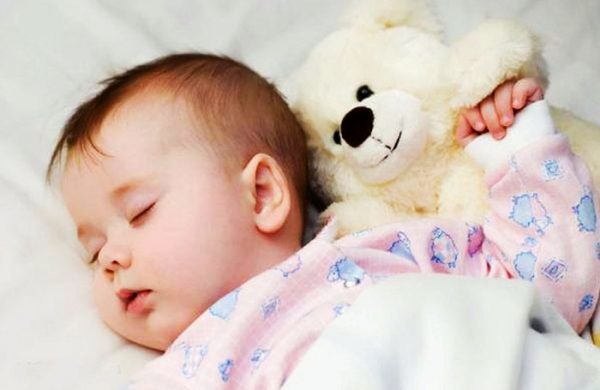
It is important to know! During sleep, body temperature decreases, so it is much easier for pathogens that enter the body to spread and multiply.
It follows from this that after a day's sleep or a night's rest, the baby's temperature rises. The main reasons why a child’s temperature may rise are the following factors:
- Viral diseases. Often, in 60% of cases, the causes of increased fever in a child after sleep are precisely viral diseases. The first sign of viral illnesses is a strong fever, indicating that the immune system is fighting the pathogens. If the thermometer reading does not exceed 38 degrees, then resorting to the use of antipyretics is prohibited. If the symptoms of fever increase, then you need to immediately give the baby an antipyretic, and then call a doctor or an ambulance.
- Bacterial infections. If a child is sleeping, then his forehead may be cold, but after waking up, an increase in temperature readings to 38-39 degrees is not excluded. If the causes of high fever are bacteria, then signs of their appearance should be looked for in the oral cavity. If you conduct a visual examination of the oral cavity, the presence of redness, white or purulent plaque, and swelling indicates serious bacterial ailments. Even if a bacteria has entered the body, parents should not panic. You need to go to the hospital and see a doctor who will prescribe the right antibiotic.
- Inflammatory processes. If the temperature rises to 38 degrees after the child wakes up, this may be a sign of inflammatory processes in the body. To determine inflammatory processes, you will need to take a blood test for the presence of leukocytes. When their value is increased, we can talk about inflammatory processes.
Children's sleep is very sound, but it is possible that it is during the night's rest that the baby may develop a fever. The reason for this phenomenon may be a negative reaction of the body to the effect of the vaccine.
It is important to know! The answer to the question of why my child’s temperature rises after sleep can only be found in the pediatrician’s office. Determining the cause on your own, much less making a diagnosis, is strictly prohibited.
Why does a child sweat after a fever?
The degrees on the thermometer creep up as a result of the attack of leukocytes, prostaglandins and interleukins on the hypothalamus. This is the part of the diencephalon responsible for the production of hormones, as well as other important metabolic processes. After an attack, hypothalamic neurons increase the value of the thermoregulation set point. This is how the mechanism of temperature increase clearly looks.
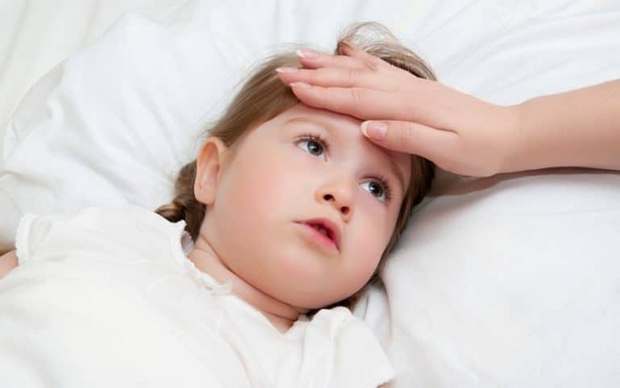
All that remains is to find out what hidden processes are activated at elevated temperatures. As strange as it may sound, fever is important for recovery:
- A process is activated that stops the further spread of the disease.
- Interferon production increases.
- Heat stimulates the immune system to work harder.
When the amount of pathogenic microflora inside the body decreases, the temperature set point becomes the same, and heavy sweating helps to reach this point faster. It is believed that if a sick person sweats a lot, it means he is recovering. It turns out that they say this for a reason, but it is a recognized scientific fact.
Conclusion - hyperthermia is a natural reaction that stimulates the body to recover. Using correctly acquired knowledge, parents will determine whether the temperature in a child’s sleep is dangerous. If you have even the slightest doubt, it is better to make an appointment with a doctor. The doctor will dispel doubts!
List of used literature:
- Giedd JN, Rapoport JL; Rapoport (September 2010). “Structural MRI of pediatric brain development: what have we learned and where are we going?” Neuron
- Poulin-Dubois D, Brooker I, Chow V; Brooker; Chow (2009). “The developmental origins of naïve psychology in infancy.” Advances in Child Development and Behavior. Advances in Child Development and Behavior.
- Stiles J, Jernigan TL; Jernigan (2010). “The basics of brain development.” Neuropsychology Review
